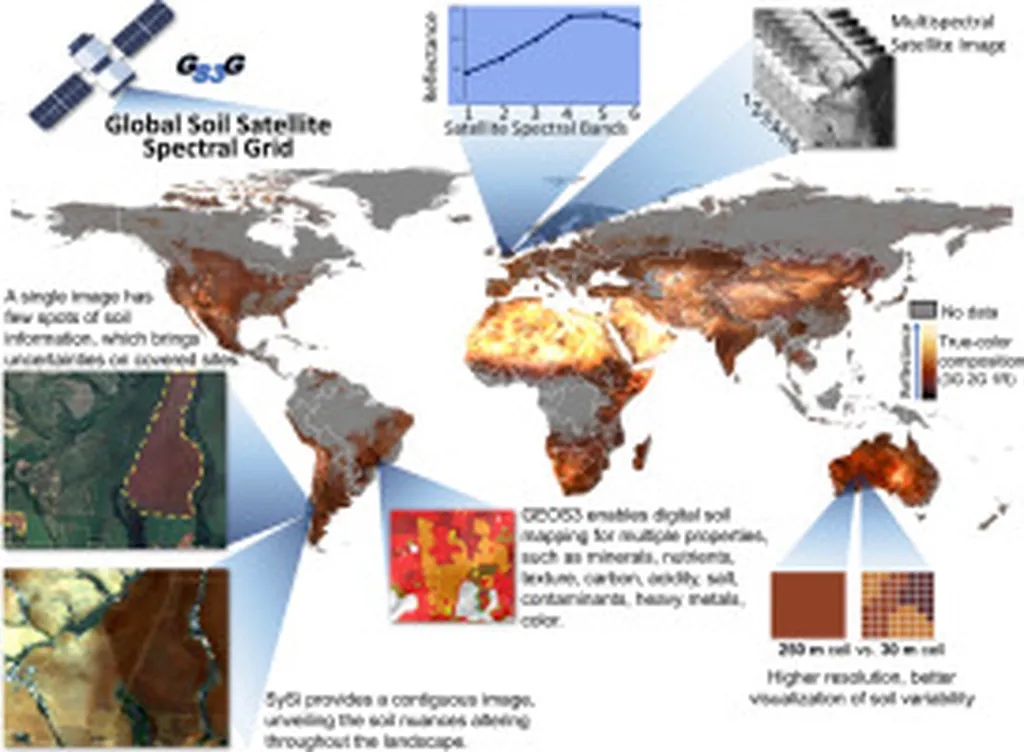In a groundbreaking study published in *The Innovation* (translated from Portuguese as *Innovation*), researchers have unveiled the first global soil grid, offering an unprecedented 90-meter resolution map of six key soil properties. Led by José A.M. Demattê from the Department of Soil Science at the Luiz de Queiroz College of Agriculture, University of São Paulo, this research integrates Earth observation data with cloud computing to provide a comprehensive assessment of global soil health. The findings not only highlight the critical role of soil in food security and climate change but also underscore the intricate connections between soil health, environmental factors, and socio-economic conditions.
The study reveals that 64% of the world’s topsoils are predominantly sandy, characterized by low fertility and high susceptibility to degradation. These conditions pose significant challenges to crop productivity and food security. “The data shows that most agricultural areas are being fertilized while simultaneously experiencing a depletion of the carbon pool,” Demattê explains. This paradox underscores the urgent need for sustainable soil management practices that balance nutrient availability with carbon retention.
One of the most striking findings is the global topsoil’s storage of approximately 900 gigatons of soil organic carbon (SOC) up to 20 cm deep. Arid biomes, despite their harsh conditions, store three times more SOC than mangroves based on total areas. However, agricultural soils show a reduction in SOC content by at least 60% compared to soils under natural vegetation. This depletion highlights the impact of intensive farming practices on soil health and carbon sequestration.
The research also sheds light on the socio-economic dimensions of soil health. The top 10 largest countries in area per continent collectively store 75% of the global SOC stock. Conversely, the poorest countries face rapid organic matter degradation, exacerbating their vulnerability to food insecurity and climate change. “There is a clear interconnection between societal growth and spatially explicit mapping of soil properties,” Demattê notes. This soil-human nexus establishes a geographically based link between soil health and human development, emphasizing the importance of soil management in enhancing agricultural productivity and promoting sustainable land-use planning.
The implications of this research extend beyond agriculture to the energy sector. Understanding soil properties and their capacity for carbon sequestration is crucial for developing strategies to mitigate climate change. The data provided by this study can inform policies and practices aimed at enhancing soil health, thereby contributing to the broader goals of carbon neutrality and sustainable energy production.
As we look to the future, the integration of soil data with Earth observation systems and cloud computing opens new avenues for precision agriculture and sustainable land management. The insights gained from this research will shape the development of technologies and practices that support soil security, digital soil mapping, remote sensing, carbon sequestration, and soil health. By bridging the gap between scientific research and practical applications, this study paves the way for a more sustainable and resilient future.
Published in *The Innovation*, this research not only advances our understanding of global soil properties but also highlights the critical role of soil in supporting societal prosperity. As we navigate the challenges of climate change and food security, the insights provided by Demattê and his team will be instrumental in guiding policy decisions and technological innovations. The future of soil management lies in the integration of cutting-edge technology and a deep understanding of the soil-human nexus, ensuring a sustainable and prosperous future for all.

